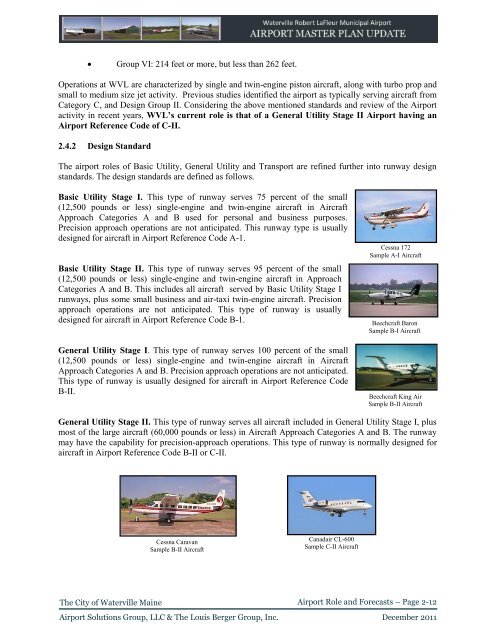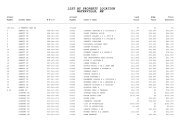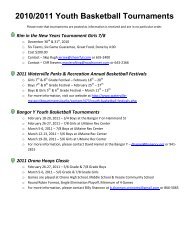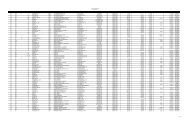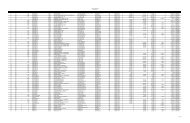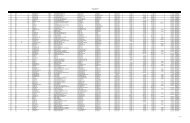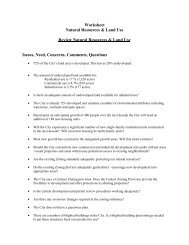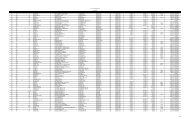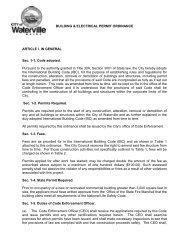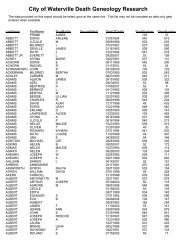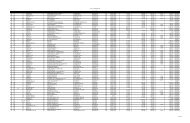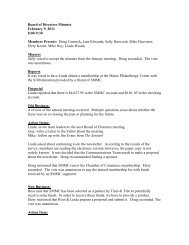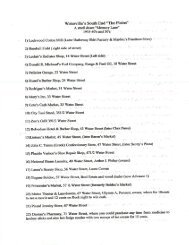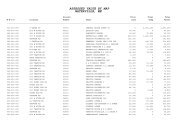Airport Master Plan 2012 - City of Waterville
Airport Master Plan 2012 - City of Waterville
Airport Master Plan 2012 - City of Waterville
Create successful ePaper yourself
Turn your PDF publications into a flip-book with our unique Google optimized e-Paper software.
Group VI: 214 feet or more, but less than 262 feet.<br />
Operations at WVL are characterized by single and twin-engine piston aircraft, along with turbo prop and<br />
small to medium size jet activity. Previous studies identified the airport as typically serving aircraft from<br />
Category C, and Design Group II. Considering the above mentioned standards and review <strong>of</strong> the <strong>Airport</strong><br />
activity in recent years, WVL’s current role is that <strong>of</strong> a General Utility Stage II <strong>Airport</strong> having an<br />
<strong>Airport</strong> Reference Code <strong>of</strong> C-II.<br />
2.4.2 Design Standard<br />
The airport roles <strong>of</strong> Basic Utility, General Utility and Transport are refined further into runway design<br />
standards. The design standards are defined as follows.<br />
Basic Utility Stage I. This type <strong>of</strong> runway serves 75 percent <strong>of</strong> the small<br />
(12,500 pounds or less) single-engine and twin-engine aircraft in Aircraft<br />
Approach Categories A and B used for personal and business purposes.<br />
Precision approach operations are not anticipated. This runway type is usually<br />
designed for aircraft in <strong>Airport</strong> Reference Code A-1.<br />
Basic Utility Stage II. This type <strong>of</strong> runway serves 95 percent <strong>of</strong> the small<br />
(12,500 pounds or less) single-engine and twin-engine aircraft in Approach<br />
Categories A and B. This includes all aircraft served by Basic Utility Stage I<br />
runways, plus some small business and air-taxi twin-engine aircraft. Precision<br />
approach operations are not anticipated. This type <strong>of</strong> runway is usually<br />
designed for aircraft in <strong>Airport</strong> Reference Code B-1.<br />
General Utility Stage I. This type <strong>of</strong> runway serves 100 percent <strong>of</strong> the small<br />
(12,500 pounds or less) single-engine and twin-engine aircraft in Aircraft<br />
Approach Categories A and B. Precision approach operations are not anticipated.<br />
This type <strong>of</strong> runway is usually designed for aircraft in <strong>Airport</strong> Reference Code<br />
B-II.<br />
Cessna 172<br />
Sample A-I Aircraft<br />
Beechcraft Baron<br />
Sample B-I Aircraft<br />
Beechcraft King Air<br />
Sample B-II Aircraft<br />
General Utility Stage II. This type <strong>of</strong> runway serves all aircraft included in General Utility Stage I, plus<br />
most <strong>of</strong> the large aircraft (60,000 pounds or less) in Aircraft Approach Categories A and B. The runway<br />
may have the capability for precision-approach operations. This type <strong>of</strong> runway is normally designed for<br />
aircraft in <strong>Airport</strong> Reference Code B-II or C-II.<br />
Cessna Caravan<br />
Sample B-II Aircraft<br />
Canadair CL-600<br />
Sample C-II Aircraft<br />
The <strong>City</strong> <strong>of</strong> <strong>Waterville</strong> Maine<br />
<strong>Airport</strong> Role and Forecasts – Page 2-12<br />
<strong>Airport</strong> Solutions Group, LLC & The Louis Berger Group, Inc. December 2011


